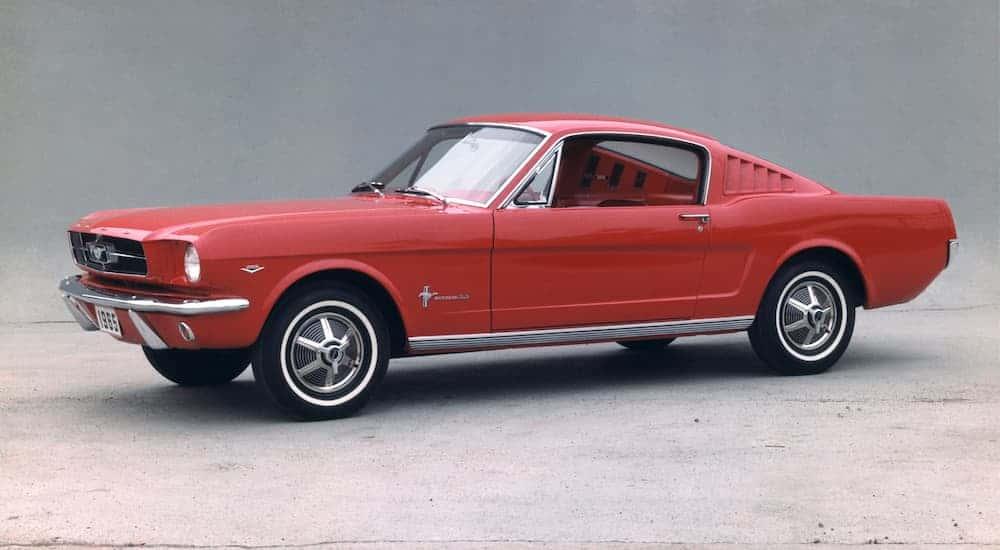Ford is about to mark 40 years of offering one of the auto industry’s least known but most appreciated features: the SecuriCode keypad.
Millions of Ford and Lincoln owners have used the feature. Demand is so strong that when Ford launched a vehicle without it, the company had to scramble to add it.
Amazingly, the keypad remains a Ford specialty. In an industry that believes imitation is the most profitable form of flattery, no other automaker has successfully copied the formula that’s captivated two generations of Ford owners.
“It’s standard in probably 90% of the vehicles we sell to the public,” said Ruben Correa, salesman at the massive Galpin Ford in Los Angeles. SecuriCode is available on every vehicle Ford and Lincoln make except for a few models that are sold primarily to commercial fleets, like utility trucks. Ford says SecuriCode costs less than $50 on the vehicles where it’s an option.
The feature is particularly popular with people who enjoy hiking, swimming, bicycling and other outdoor action sports. They leave their keys in the vehicle, lock it and use a combination only they know to re-enter. No worry about losing keys or replacing expensive electronic fobs. As new features like Lincoln’s Phone as a Key allow drivers to use smartphones to unlock and start vehicles, the keypad still provides a way keep the iPhone safe and dry while you snorkel or ski.
More:Jim Vella to leave Ford after three decades, now Mary Culler to lead Ford Fund
More:Cops wonder about Police Interceptor SUVs disrupted as Ford manages manufacturing issue
SecuriCode isn’t just for the great outdoors, though. I never understood why owners love it until a bitterly cold January night when a Free Press photo editor raved about leaving her Ford Explorer Sport Trac locked, running, warm and secure as she picked up pizza to feed her staff in downtown Detroit.
She swore she’d never buy a vehicle without the keypad. I think our photographers would have revolted if she did.
Failure is not an option
It’s not easy to make a touchpad that works all the time in all weather conditions. That may be why no other automaker has offered the feature as long or on as many vehicles, Ford switches and mechatronics manager Joe Scott said.

“It’s a challenge to design a switch that’s accessible from outside the vehicle,” Scott said. “Ford puts a lot of effort into making sure the customer can lock and unlock their vehicle. When people go away from Ford, they miss it.”
Getting into your vehicle can’t be a sometime thing. Imagine the consequences if a hiker fleeing a wildfire or a family rushing a child to the emergency room couldn’t get into their Ford. You would have heard if that happened, and you haven’t.
“A lot of people look for the keypad,” said Jalen Ankton, salesman at Royal Oak Ford in Michigan. “I’ve never had anybody complain about it.”
The feature debuted on the 1980 Ford Thunderbird, Mercury Cougar, Lincoln Continental Mark VI and Lincoln Town Car. 1980. If you were around then, you’d never heard of a capacitive touch pad, much less a smart phone app. The keys were physical buttons, set into the metal of the door near the handle. Five buttons, each for two digits: 1-2; 3-4; 5-6; 7-8; 9-0.
New technology, more features
In 2009, Ford updated the technology, replacing physical buttons with a capacitive touch pad on the 2009 Lincoln MKS luxury sedan. The keypad migrated from near the exterior door handle to the B-pillar, the vertical support at the rear of the driver’s door. The pad still has five touch points for 10 digits, virtually invisible under an applique on the B-pillar.
“It was Ford’s first capacitive switch,” Scott said. “It was a big challenge. It had to work with water flowing over it and at all temperatures.”
Some vehicles still have physical switches, notably F-150 pickups and others whose drivers are likely to wear thick work gloves. The capacitive control is designed to work with gloves up to about 1.5 mm thick.
Every once in a while, an executive with a sharp pencil and dull brain asks why Ford continues to offer a feature none of its competitors bother with.
The company got the answer when it launched the Focus compact without a touch pad.
“We had to add it within a year because of customer demand,” Fordelectrical engineer Sony Minhas said.
Over the years, Ford has added features. Depending on the vehicle, the keypad can now recall a driver’s preferences, open the trunk and more.
New features like Lincoln’s Phone as a Key may challenge the touch pad, but SecuriCode’s core benefit of leaving the phone secure in a locked vehicle remains.
Ford continues to refine the feature.
“Hopefully, we’ll find a user experience that’s even better than the one we offer today,” Scott said. “We’re even looking at facial recognition.”
Contact Mark Phelan at 313-222-6731 or mmphelan@freepress.com. Follow him on Twitter@mark_phelan. Read more on autos and sign up for our autos newsletter.
